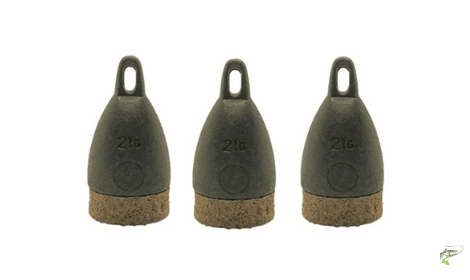
Plumbing the depths is a very integral part of effectively catching carp. Plumbing for the first time can be a little confusing, but it is essential to accurately present your bait in the swim, mainly when float fishing. Once you do this a few times it will become quick and easy, and your fish catching rates will undoubtedly improve.
Without wasting any more time, lets get into how to plumb depths to improve your coarse fishing.
What is Plumbing the Depth?
Plumbing the depth is simply a way to find the exact depth of the precise spot you intend on fishing so that you can accurately place your bait very close to the bottom or on the bottom while float fishing. There are tricks you can use to make this easier, and in this article we will take a look at how to easily plumb depths.
Why is It Important to Plumb the Depth
As mentioned above, plumbing the depth is important so that you accurately present your bait to the fish. If your bait is too high, the fish will simply swim under your bait offering, if your bait is too low with slack in the line and bait laying on the bottom means you won’t detect the bite on your float setup potentially causing you to miss the opportunity. Therefore properly plumbing the depths for float fishing is imperative in many situations.
How to Accurately Plumb Depths
Once you have your chosen float on your setup it’s important to use some shots on your line below the float with the correct amount of weight so that the float stands and sits in the water in the correct manner.
Add a plummet to your line, with the hook embedded in the cork bottom. For most cases we recommend a 14 gram weight for most applications with stillwater and more for current.
Now it’s a simple matter of adjusting the float so that the top bristle of your float is the only thing above the water. This means you will have to adjust accordingly by giving your setup more or less line until your float indicates that your bait is just touching the bottom with a taut line to your float, without being too deep or shallow.
The shot will also keep your rig stable in the water without swaying much, allowing your bait to hang within centimeters off the bottom if done correctly, giving the fish a perfect snack to grab with little effort. The smallest of bites can be detected by the float as well.
The video below gives a great explanation of these steps;

Plumbing Tips and Tricks
Heavy plumbing weights can be ok for rivers and current or rocky bottoms, but in stillwater fishing areas with soft silty bottoms the weight could sink deep into the silt, throwing off your bait presentation. In stillwater fishing conditions the lighter the plummet the better.
In weedy conditions it might be a great idea to use some tungsten putty. Put the putty on your hook. It’s heavy enough to use as a plummet in still water weedy conditions, and will prevent weeds from fouling up your hook, and even potentially losing your float setup entirely.
In weedy fishing conditions it’s also a great idea to set your depth so that it’s about an inch off of the bottom. This will ensure your bait doesn’t get lost, tangled, or obscured in bottom debris, which will undoubtedly mean lost fish catching opportunities.
Learn the Water by Plumbing
Plumbing is also a great way to help paint a mental picture of the bottom composition. While plumbing various areas where you intend to fish you will learn the depths of those areas in detail.
We know that fish tend to search out specific areas to hold in, such as depth variation areas, cover areas, etc. learning these swims will greatly aid you in the long run and after a few trips and plumbing the swims you will learn where the best spots are on a given body of water.
That’s All!
Plumbing is very important for precise bait presentations as well as for learning the water you are fishing and i hope you now know how to plumb depths effectively.
Luckily, it’s fairly straightforward and after doing it on the water a few times, relatively easy to learn. If you have any questions or anything to add then leave a comment below and I’ll get back to you ASAP.

